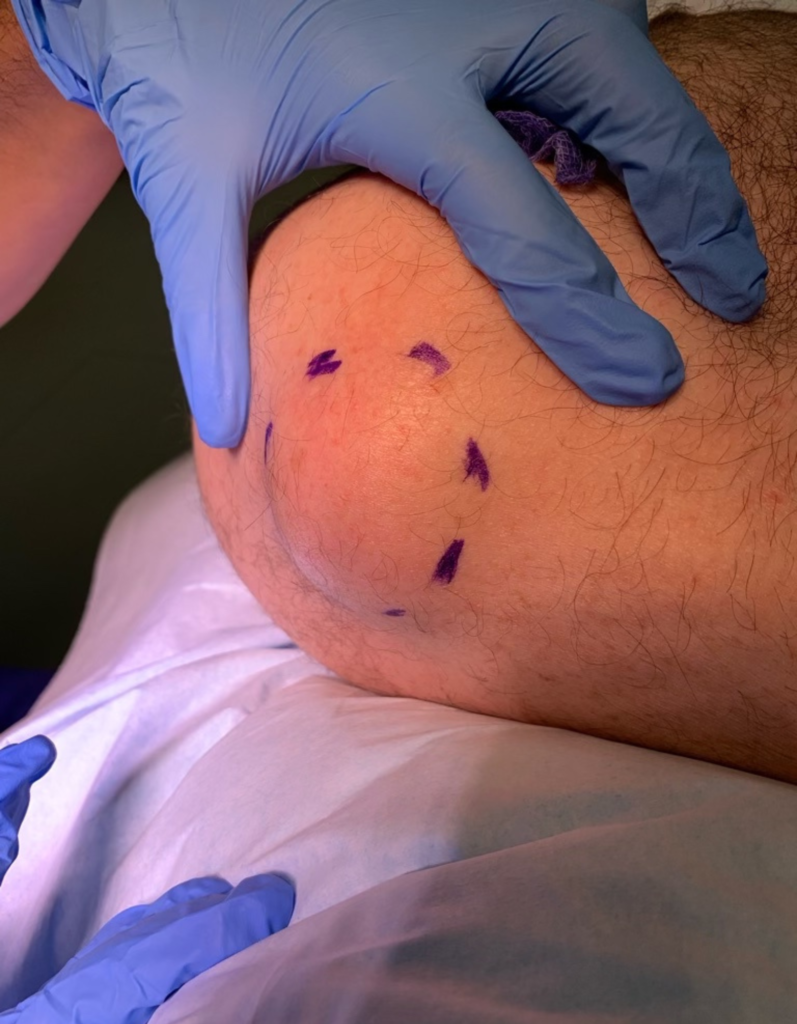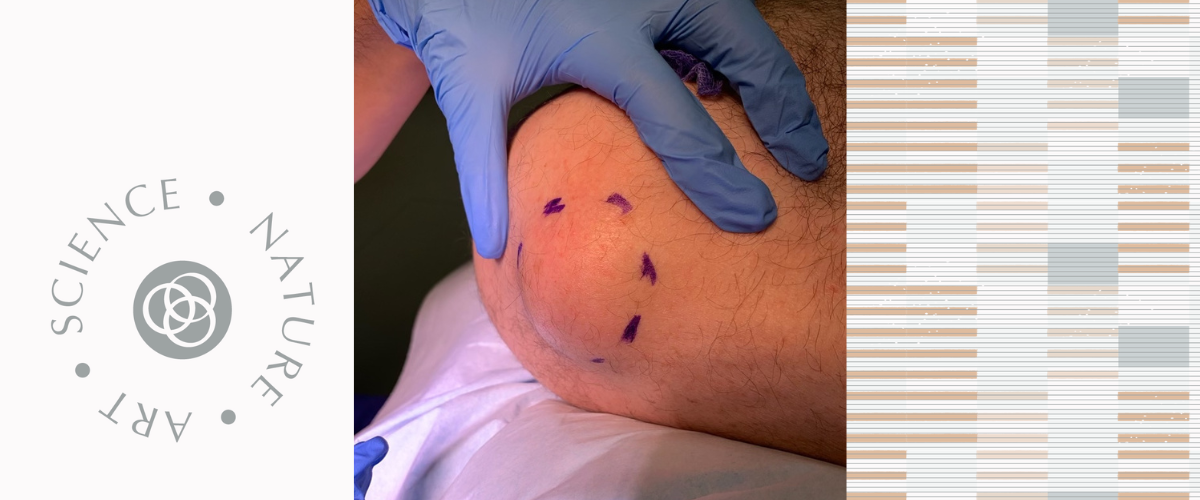North East and Yorkshire
Unlocking NHS Access: A Guide to Lipoma Removal on the NHS
“Why can’t I have my lipoma removed on the nhs!” This is a question we get asked all too often.
If you’ve been living with lipoma, you know the impact of it. GP will tell you it’s fine, don’t worry, it is not going to become anything malicious.
But I bet it probably makes you feel self-conscious when people’s eyes dart to the lump on your neck or the bump on your back. Or when taking your clothes off in public. Or going to the pool or beach. This might be news to you, but did you know your lipoma treatment can be done on the NHS?
If your GP says it’s not possible, then make sure you read to the bottom of the page so you can get the definitive document, and they take you seriously.
For those of you who don’t know what lipoma is, we’ve written a couple of in-depth articles about lipomas, how to get them treated and the options.

So when can you have lipoma removal on the NHS?
As we are based in Harrogate North Yorkshire we’ve focused on the guidelines for people living in Yorkshire, Durham, Tyne and Weir and Cumbria.
To have your lipoma removed on the NHS it has to meet certain criteria. Cosmetic concerns do not meet the NHS standards.
Here’s the sentence that provides the light for people who want to have their lipoma removed on the NHS
In certain cases, treatment (surgical excision or cryotherapy) may be offered if certain criteria are met.
So what are those criteria?
Before we come to what aee the d criteria for treatment are we to understand how each local ICB commissions the removal of benign lesions i.e., Lipoma.
CCGs were replaced by Integrated Care Board (ICB) in 2022.
The local ones in North East and Yorkshire
NHS Humber and North Yorkshire ICB
NHS North East and North Cumbria ICB
NHS South Yorkshire ICB
NHS West Yorkshire ICB
Click on the link below to have a look at ICBs map for the all the locations in England
https://geoportal.statistics.gov.uk/documents/ons::integrated-care-boards-april-2023-map-in-england/explore
Commissioning of Benign Skin Lesions
- NHS Humber and North Yorkshire
- NHS North East and North Cumbria
- NHS South Yorkshire
- NHS West Yorkshire

North Yorkshire
North Yorkshire has a comprehensive and objective criteria. If you live within North Yorkshire and want your Lipoma removed on the NHS the governing body will take you seriously if the lipoma meet at least ONE of the following criteria to be removed:
- The lesion is unavoidably and significantly traumatised on a regular basis, with evidence of this causing regular bleeding or resulting in infections such that the patient requires 2 or more courses of antibiotics (oral or intravenous) per year
- There is repeated infection requiring 2 or more antibiotics per year
- The lesion bleeds in the course of normal everyday activity
- The lesion causes regular pain
- The lesion is obstructing an orifice or impairing field vision
- The lesion significantly impacts on function e.g. restricts joint movement
- The lesion causes pressure symptoms e.g. on nerve or tissue
- If left untreated, more invasive intervention would be required for removal
South Yorkshire
South Yorkshire is a little more vague. If you live within South Yorkshire and want your lipoma removed on the NHS the guidelines are
Surgical treatment of benign skin lesions will not be routinely commissioned by the NHS for cosmetic reasons. Cases may be considered on an exceptional basis, for example, when:
- lesions are visible- on hands or face- and of considerable size
- lesions are causing significant physical symptoms or impairment.
West Yorkshire
If you live within West Yorkshire and want your Lipoma removed on the NHS the governing body will take you seriously if the lipoma meet at least ONE of the following criteria to be removed:
- The lesion is unavoidably and significantly traumatised on a regular basis with evidence of this causing regular bleeding or resulting in infections such that the patient requires 2 or more courses of antibiotics (oral or intravenous) per year
- There is repeated infection requiring 2 or more antibiotics per year
- The lesion bleeds in the course of normal everyday activity
- The lesion causes regular pain
- The lesion is obstructing an orifice or impairing field vision
- The lesion significantly impacts on function e.g.restricts joint movement
- The lesion causes pressure symptoms e.g. on nerve or tissue
- If left untreated, more invasive intervention would be required for removal
- Facial lesions > 1cm that cause significant disfigurement
- Lipomas on the body > 5cms, or in a sub-facial position, with rapid growth and/or pain.
Humberside
If you live in Humberside and want your Lipoma removed on the NHS the governing body will take you seriously if the lipoma meet at least ONE of the following criteria to be removed:
- The lesion is unavoidably and significantly traumatised on a regular basis with evidence of this causing regular bleeding or resulting in infections such that the patient requires 2 or more courses of antibiotics (oral or intravenous) per year
- There is repeated infection requiring 2 or more antibiotics per year
- The lesion bleeds in the course of normal everyday activity
- The lesion causes regular pain
- The lesion is obstructing an orifice or impairing field vision
- The lesion significantly impacts on function e.g. restricts joint movement
- The lesion causes pressure symptoms e.g. on nerve or tissue
- If left untreated, more invasive intervention would be required for removal
Durham, Tyneside and Cumbria
If you live in Durham, Tyneside or Cumbria and want your Lipoma removed on the NHS the governing body will only fund removal if it meets the following criteria.
- There is well-documented evidence of significant pain (see FAQs)
- The lesion is unavoidably and significantly traumatised on a regular basis with evidence of this causing regular bleeding or resulting in infections such that the patient requires 2 or more courses of antibiotics (oral or intravenous) per year
- There is an impairment of visual fields
How to talk to your GP?
GPs play an important role as gatekeepers to further treatment. It is important to understand that GPs are extremely busy and often overworked. In addition to consultations, they have lots of paperwork, documentation and other responsibilities as part of their job. So be empathetic to this and help to make their life easy.
Preparing for your appointment
- Gather information – Come well prepared for your appointment. So have clear and concise answers to questions about your symptoms, the duration that you have had the lipoma, the rate of growth of the lipoma, any pain experienced. Also explain any disomfrot of functional impairment you are experiencing due to the lipoma.
- Documentation – clear evidence of the impact of the lipoma will help your gp. This can include previous medical records, photographs over a period of time showing changes in size, ulcerations, or bleeding from the lipoma.
During the appointment
- Open Dialogue: Have an open and honest conversation with their GP. GPs are there to help and listen.
- Specific Concerns: Be specific about how the lipoma affects their daily life, whether it’s pain, discomfort, mobility issues, or psychological impact.
- Express Needs Clearly: Clearly express their concerns and why they believe removal is necessary, focusing on health-related issues rather than cosmetic ones.
If referral is not possible
NHS Guidelines: GPs must adhere to NHS guidelines so it can be helpful to have a copy of the guidelines for lipoma removal. Ask your GP why your case does not meet NHS guidelines.
Do not be embarrassed to ask for a second opinion if you are not satisfied with your GPs care.
Summary
In this article, we’ve explored the nature of lipomas and the guidelines surrounding their removal within the NHS framework.
Understanding these guidelines is crucial in navigating the healthcare system effectively. We’ve highlighted the importance of open communication with your GP and being well-prepared for your appointments.
It’s essential to remember that while lipomas are often considered non-urgent, their impact on your physical and psychological well-being is significant and worth discussing with your healthcare provider.
The NHS, with its commitment to patient care, offers specific pathways for the treatment of various conditions, including lipomas. However, these pathways are governed by guidelines that sometimes make the process seem challenging. It’s important to approach these challenges with a clear understanding and a collaborative mindset.
Next Steps
Share Your Experience: If you or someone you know has navigated the NHS system for lipoma removal, share your story. Your experience could provide valuable insights and encouragement to others in a similar situation. Leave a comment below or get in touch with us to know more.
Consult Your GP: If you believe that a lipoma is affecting your quality of life, don’t hesitate to discuss it with your GP. Use the tips and advice from this article to prepare for your consultation.
Stay Informed and Proactive: Keep yourself updated with the latest NHS guidelines and policies regarding lipoma treatment. Being informed empowers you to make better decisions about your health.
Explore Alternatives: If you find that NHS pathways are not viable for your situation, consider exploring alternative options, such as private healthcare. Remember, your health and well-being are paramount.
Spread Awareness: Help spread awareness about lipoma treatments and NHS guidelines by sharing this article. The more people know, the easier it becomes to navigate the healthcare system.
Your health journey is personal and unique. Whether through the NHS or private healthcare, finding the right path for your lipoma treatment is important. We hope this article has provided you with valuable information and guidance to take the next step confidently. Remember, you are not alone in this journey, and there are multiple avenues available to support your health and well-being.
Related Posts

How Long Do Dermal Fillers Last? Tips for Prolonging Results
Fresh, youthful skin never goes out of style, and dermal fillers have become a beloved solution for achieving just that.

Russian Lip Filler vs Normal Lip Filler
Learn About Lip Filler Injections in Yorkshire Lip fillers have become one of the most popular cosmetic treatments for enhancing

